I never thought I would have to write a piece like this one. Still, with the rise of generative AI software, sorry, plagiarism software, there has been some interesting talk online about how many bloggers within the film photography realm have started turning over the hard work of writing reviews to things like ChatGPT. And while I know that some people are, the people I closely interact with all ‘do their own stunts.’ But people love having proof, so today, I will walk you through how I create a full camera review from start to finish, using a review I wrote on the Nikkormat FT2, due for release in November.

I have reviewed a lot of cameras, some more interesting than others, and others that are difficult to find any details. Thankfully online resources are more robust than when I started back in 2015. When a camera comes across my desk, the first thing to do is look up the background of the camera. This includes the previous models, the corporate history, and the camera’s features. I use various trusted websites and available physical print media at my disposal. I keep separate notes for each website and books I use, then summarise what I found. Yes, it takes up a lot of time, but only some sources are the same; some have gaps, others fill in gaps, and others have conflicting information. It could be a better method; I often get things wrong or slightly incorrect. But once I have all these separate notes done, I can start building a main timeline for the camera’s history and design lineage. I will also look up the average cost of the camera online using eBay, KEH, and B&H as my benchmarks. Impressions I will take note of anything about the physical camera that stands out, from weight, design, and any known variants and finishes. When taking notes on optics, it depends on the camera; with interchangeable lenses, I can usually start the notes before using the camera as I can discuss the availability and provide some suggestions on a starting lens kit. For a fixed lens camera, I will wait until after I have a couple of rolls through the camera before making a final say on what I think of the lens and its quality. Experience is the last piece I will take notes on after a couple of rolls through the camera. I generally will note film loading, the feel of the camera in my hand, the shooting experience, and other things. I take close notes on any weird operations and quarks, mostly going with what my gut says.
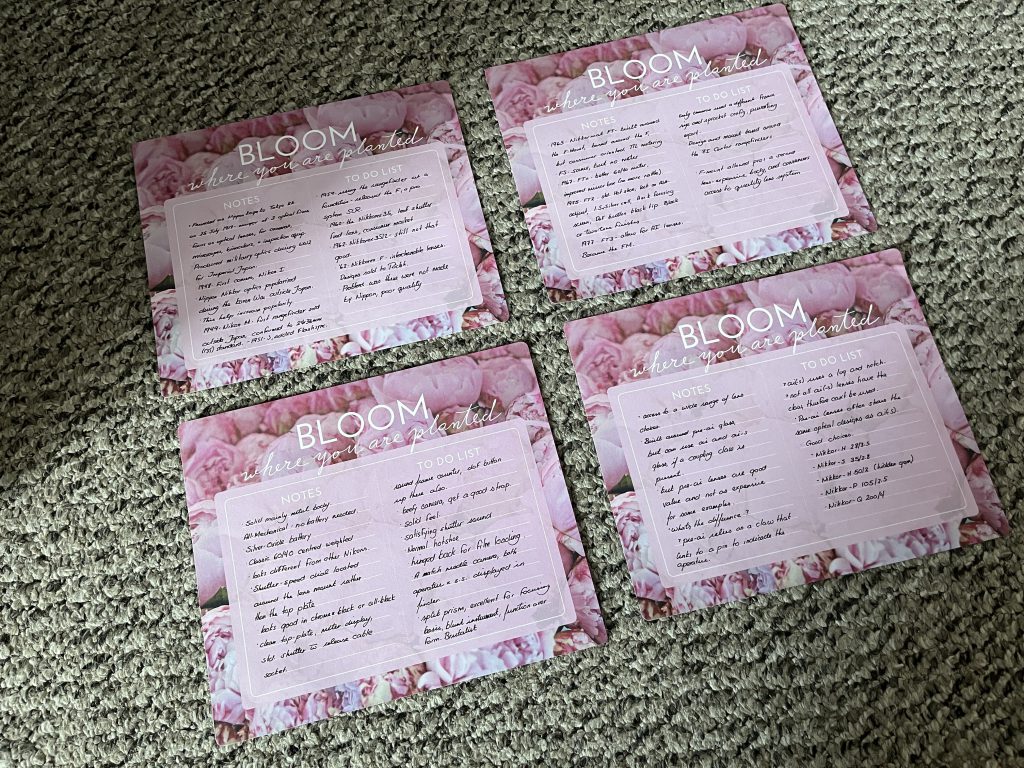
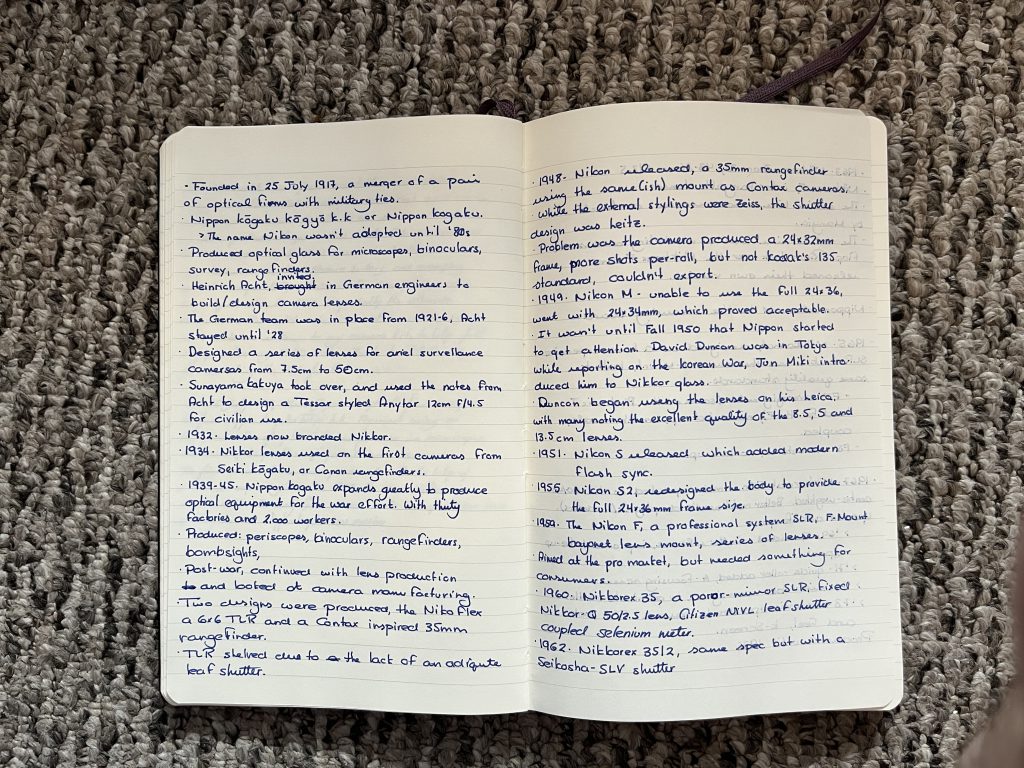
Once the notes are made, I can write the review. My review style has changed since I started, and even that second format was moderately updated, so I’m on version 2.5 of my reviews in software parlance. Originally I had it set up to talk about the good, the bad, and my recommendation on the camera, but that was switched up to be a little more balanced, and then the background was added onto that a little later. There are still several published reviews in the original format, but none of the second formats as those have been updated to include the background by this point. I need to work through and clean up the original format where possible. I will usually start this process before I even start using the camera, as things like the impressions and history don’t require me to have shot a roll through the camera. Once I have a couple of rolls through the camera, I start to draft out the experience and, in some cases, optics. All the initial writing is done by hand, usually with a fountain pen and a notebook; I find it easier to get things down by hand first and avoid significant distractions. One of the most complex parts of writing in history since things in the camera world often down follow a clear path from start to finish. Things twist and turn, and I’m constantly referencing other cameras used to test technologies that would go into later models. While companies like Olympus and Pentax are pretty clean, Canon and Nikon always put new technologies into other lower-spec cameras before hitting high-end models.
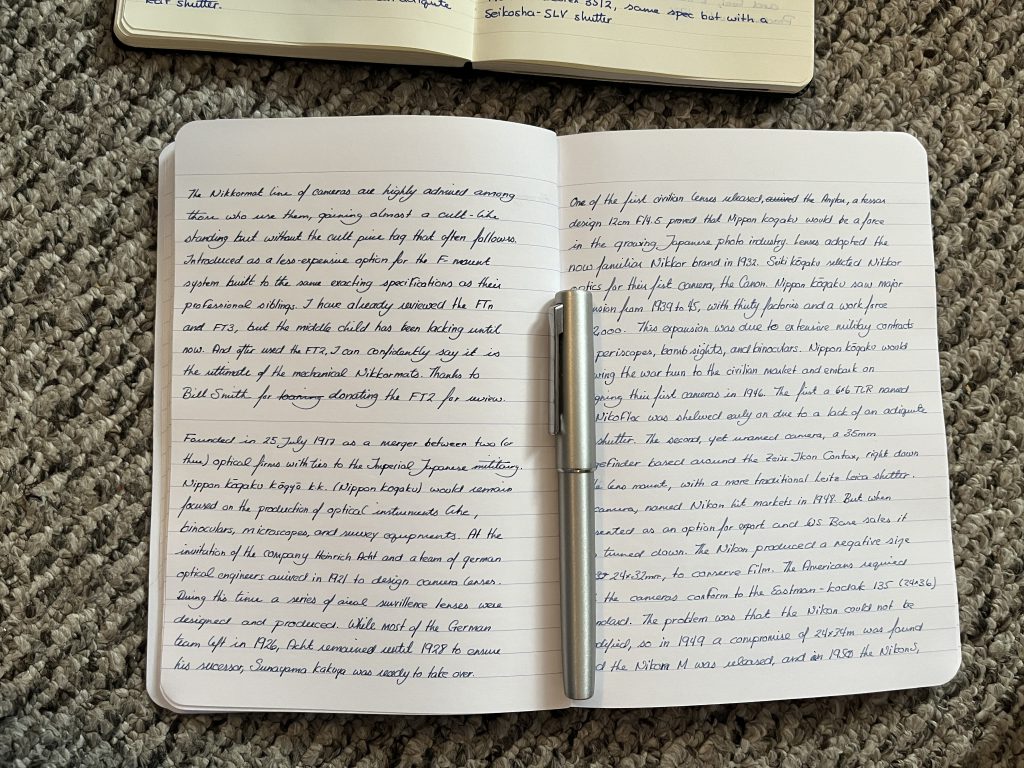
Once the written parts are done, I can start to type them into a computer. I used to do this directly in WordPress, the software that drives this blog, but recently I began to use a piece of software called Q10. Q10 is a lovely simple word processor that reminds me of WordPerfect 5.1, a word processor that was a screen with a cursor plus some menus, but keystrokes accessed them. It makes for a simple, efficient and distraction-free way of typing. Plus, there are typewriter sounds, gimmicky, but I enjoy working with traditional typewriters and would use one as a step! Q10 fills the screen and even blocks out the taskbar, and I set Windows to turn off all notifications when I’m working in Q10. Files are saved as simple text documents, so I can open them in Notepad when it’s time to move the text into the blog post. I take each paragraph from the text file and run it through Grammarly. In full disclosure, Grammarly uses some AI technology but doesn’t generate entire blocks of text. Instead, it figures out what you’re doing (through prompts) and then fixes spelling and grammar errors. It also makes suggestions to change the tone and improve the writing overall. Once done, it drops into the WordPress post.
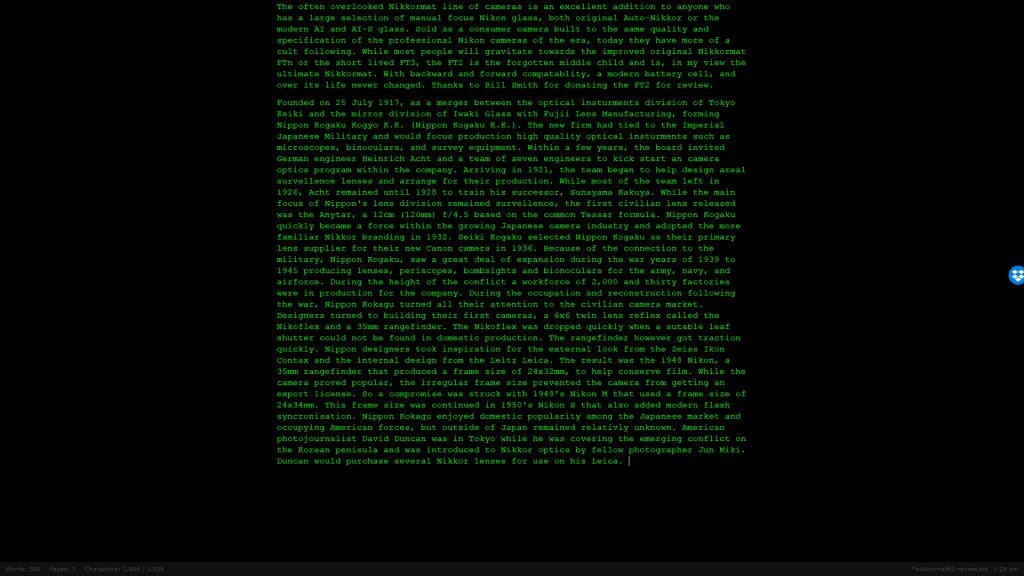
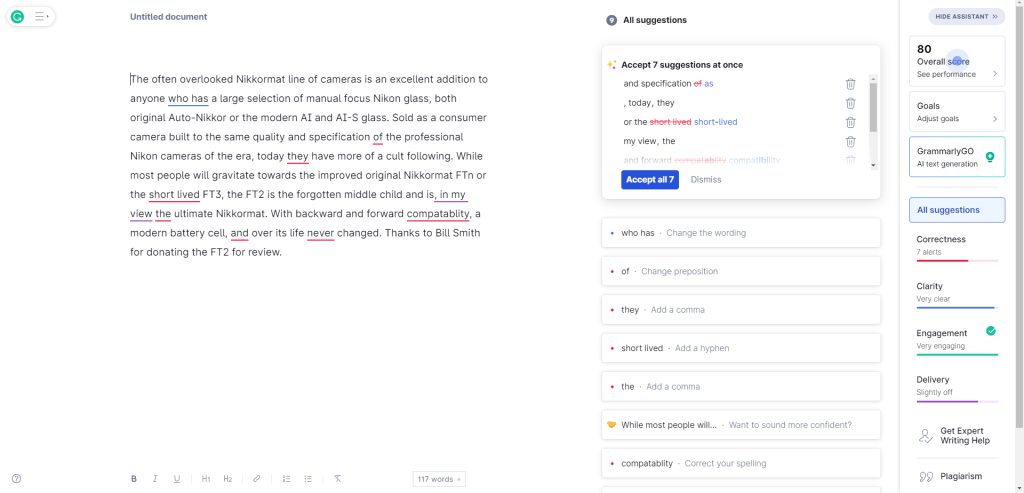
Taking the camera into the field is the most enjoyable part of the review process. When I started, I would only run a single roll through the camera, which often resulted in terrible reviews because I had yet to figure out the camera. And in some cases resulted in a couple of bad reviews, because I messed up something. So starting last year, I would shoot at least two rolls through the camera. The first roll would be to figure out how to use the camera, especially in the absence of a manual; the second roll was the ‘official’ review roll and posted to the appropriate Flickr album. And the third role played a couple of things, first would be to ensure I had enough images for the review post itself; second, it was what I would shoot when filming the video review for the camera. Often the first and third rolls could serve double duty for a developer review or another blog post. With the cost of film these days, it’s important to maximize the use of a roll! I’ll do my best to get a variety of film stocks and developers to show off what the camera can do; I will usually stick to black & white because it is the least costly, and I can develop it at home for a fast turnaround on the images. I’ll use different lenses to drive home the point of the interchangeable ability of the camera. And if I can get my hands on different lenses.




A well-done review that includes both a written and video part will take two to three weeks to complete. It takes a lot of work since I want to provide those who read my reviews with a good picture of the camera, especially if they want to purchase one. Written film camera reviews were something that I never had access to when I first started in film photography. The reviews were found in old camera magazines that weren’t available online, so I wanted to ensure that the next group of film photographers had a resource I did not have when I started. It’s all about making the world a better place. Are my reviews perfect? Of course not; I also add links to other reviews for the same camera. Most are from the circle of bloggers (the Camera Blogger Alliance), but others are found through searching online. Is all the work worth it? Yes, it is, and I always take pride that each review is created and written entirely by my hand; no generated text from AI is included. And I even make sure that when I add a link to a review, I found is not written by AI. And it is still easy to determine if AI writes a review; I’ve seen some text from my blog in other blogs done by AI generators. But camera reviews aren’t the only ones I write, and I will continue this series and dig into how I write my film, lens, and developer reviews next year!
Hello Alex, it was a great pleasure to read how your reviews come about. And yes, the reviews are very important to us. I listened to your judgment and followed your recommendation when purchasing one of my cameras – Nikon F90. Thanks for everything, best regards from Germany, Peter
I didn’t realise how far things had moved in such a short time. Hard to fathom that folks blogging about the joy of film would go near computer generated copy. Goes to show just how effectively AI has been “normalised’.
Q10 looks like a winner. I’ve never really enjoyed word processing tools in general, with so many distractions rather than a nice clean screen to pour out the words. In my case I use UpNote to file away my drafts and ideas, often coming back them months later when the time is right. It’s not quite as clean as Q10, but does a good job of spell-checking… and without such tools my writing would be a disaster!
great read Alex! Thanks for all the work you put into everything you do, and also your notes are immaculate!